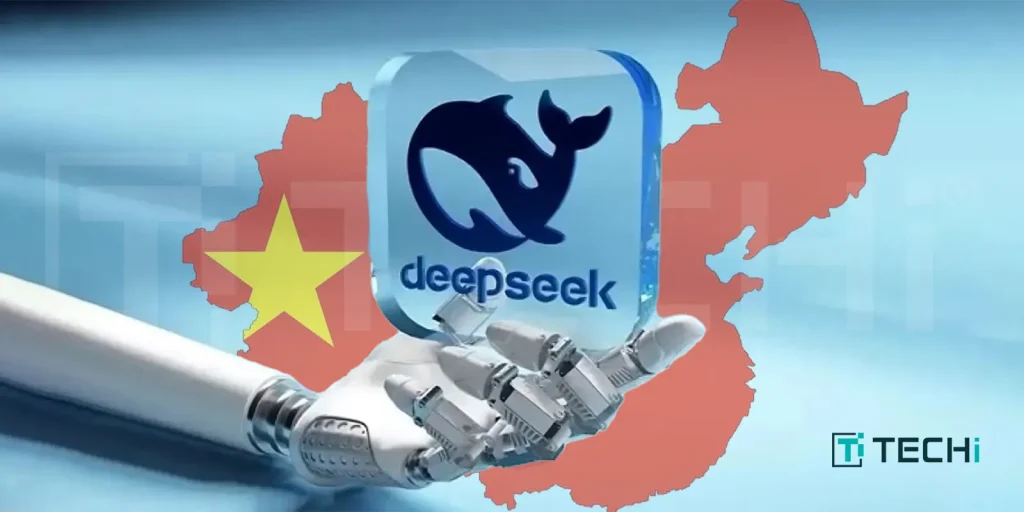DeepSeek has entered into the game changer territory of AI, wherein tech giants are choking each other for supremacy, with the release of its low-cost AI models, the company shocked the AI community and challenged the very definition of innovation when it comes to AI. Now that DeepSeek is ahead of its schedule in launching its newest AI model R2, the world is watching, some with excitement, others with unease.The Hangzhou startup recently accessed the global source markets with its cost-effective yet high-performing AI model R1 and is now pushing home the credit.
With the success of R1, which started a $1 trillion global equities sell-off, DeepSeek’s rapid developments are closely being followed by competition and regulators alike. Rumors around the company have brightened up the release originally set for early May, suggesting plans to push back the launch. While insiders are not yet given permission for an official comment on where R2 stands for development, reports indicate the new model would provide enhanced coding capabilities and superior reasoning across many languages apart from English. This initiative is seen within the geographical focus on advancing a strong position in AI at a time of tight geopolitics and economics.
DeepSeek’s Unconventional Standpoint:
It runs more like a research lab rather than a corporation in the sense of conventional Chinese tech firms such as cut-throat hierarchies and tiring work hours. Founder Liang Wenfeng, instructed the culture of innovation by attracting the best algorithm engineers and establishing a very flat management style. Employees describe working in an environment where research interest and creativity come before corporate bureaucracy. A 26-year-old researcher, Benjamin Liu, who left the company in September, said, “Liang gave us control and treated us as experts. He constantly asked questions and learned alongside us. DeepSeek allowed me to take ownership of critical parts of the pipeline, which was very exciting”.
Deepseek’s R1 model made headlines by outperforming its competition even though it was trained on less powerful Nvidia chips. Whereas hundreds of billions have been poured into AI research by U.S tech titans like OpenAI and Google, DeepSeek showed that a cost-effective solution can also yield top tier results. Industry experts believe that the launch of R2 could further disrupt the AI landscape, making Western firms rethink their pricing strategies against such offerings and technological approaches.
Geopolitical Implications:
DeepSeek’s rapid rise is not merely a business success story, it has serious geopolitical repercussions. Both the U.S and China have identified AI leadership as a national priority, and DeepSeek’s developments will likely provoke further concern in Washington. In the meantime, Chinese authorities have embraced DeepSeek, incorporating its models into state and corporate systems at a strikingly fast pace so far. At least 13 Chinese city governments and 10 state owned enterprises are already using DeepSeek technology, further entrenching its role as a critical player in China’s AI ambitions.
High-Flyer’s Strategic Investments:
High-Flyer has invested heavily in AI research and infrastructure, which underpins DeepSeek’s ability to develop competitive AI models at less than half the cost. Long before this boom gripped the industry, the fund was one of the earliest adopters of AI-driven trading and committed 70% of its annual revenue to AI research. By 2021, it had already acquired in-house basic computing infrastructure, two supercomputing AI clusters featuring Nvidia A100 chips purchases that later proved critical when the U.S restricted advanced semiconductor technologies with China.
Global Scrutiny:
DeepSeek’s innovations are draped in praise in China, elsewhere, however, they are the object of great mistrust. Some Western governments, along with South Korea and Italy, announced the removal from its national app stores of any application developed by DeepSeek, citing privacy and security. Even then, some analysts warned of the possibility that a Chinese state entity may turn the DeepSeek models into a noun, much to the anger of everyone else, based on this perception, Western countries would likely impose restrictions on AI chip exports and software collaboration in retaliation, thus increasing the competition in the AI arena. An ever present concern is the restriction on the export of advanced AI chips, and from there, to really establish the serious testing of innovation would be the ability on the technological side to keep a perceived edge abroad with no access to top technological hardware.
In light of the rapidly approaching launch of R2, it is evident that this AI field is also undergoing transformative and convulsive changes. The ability of DeepSeek to create competitive models at a fraction of the cost has not only disrupted the markets but led to an escalating AI arms race between China and the West. Only time will illuminate the full repercussions of DeepSeek’s mind bending developments, but it is a fair prediction that AI’s strategic ingenuity will be a vessel in which its future will be developed. Whether this will spark collaboration, competition, or a regulatory onslaught remains uncertain, but there surely lies an exciting and turbulent ride ahead for the industry.
Read More: Google Unveils Free AI Coding Assistant ‘Gemini Code Assist’ with Industry-Leading Usage Caps




